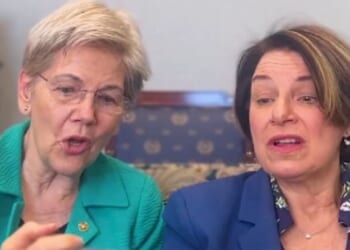
How much longer will lawmakers allow this to go on?
The current government shutdown already holds one record. If it continues on into the week, it’ll claim another. Monday, November 3, is day 34. No other full shutdown has lasted this long, and the only partial shutdown to run longer only lasted 35 days. Yet when the House and Senate reconvene today at 2 and 3 p.m. Eastern, respectively, they will do so without even the beginnings of a deal to end it.
Another Record Down
Hundreds of thousands of civilian government employees have been furloughed, and thousands more laid off entirely. Several federally funded services have paused because they don’t have the money to operate. And until the shutdown ends, this trend will only continue to grow.
But while this is the longest stretch in US history that Congress has allowed funding to lapse without passing any appropriations bills for the next year, there was one partial shutdown that lasted longer – even if only just barely. From December 2018 to January 2019, it took 35 days for Congress to make a deal that President Donald Trump would sign to end the shutdown. Five of the dozen required appropriations had been passed before the shutdown, but the hang-up on the rest was money for the border wall. Trump eventually got behind a short-term continuing resolution to reopen the government, and Congress finished out the appropriations, including $1.375 billion for 55 miles of fencing at the border, just a few weeks later.
On Tuesday, the present lapse will be tied for first, and on Wednesday, it will become the longest of any degree of funding-related shutdown.
The third longest on our list was during Bill Clinton’s presidency. It lasted 21 days across December 1995 and January 1996. Jimmy Carter claims the fourth-longest, with a trifecta of power in the Swamp. He vetoed Congress’ spending bills over what he considered excessive funding for defense and public works, and there was a dispute over abortion in the appropriation bills as well. Rounding out the top five, Barack Obama’s 16 days from October 1 to October 17, 2013, werexf yet another dispute over Affordable Care Act funding.
Shutdown Ends When the Democrats Give In
As the first month of the shutdown rolled over into the second on November 1, a variety of government services, like WIC, SNAP, and Head Start, ran out of funding and began pausing or closing up shop around the nation. It seemed, for a moment, that Democrats were finally willing to accept a less expensive compromise than their demand for a permanent extension of the full ACA subsidy expansion passed during the COVID-19 pandemic panic. And, just as briefly, it appeared the GOP might grant it.
It was not meant to be, however.
By November 2, there was no real talk of making deals. President Trump said in an interview with 60 Minutes on Sunday that he “won’t be extorted” by the Democrats, who he called “crazed lunatics” that had “lost their way.” The president said, rather dismissively, that the shutdown will end when the Democrats give in. “If they don’t vote, that’s their problem,” he explained.
As well, there no longer seems to be much appetite from congressional Republicans for passing a new stopgap funding bill that meets any, never mind all, of the Democrats’ demands. Even representatives from battleground states, like Reps. Rob Bresnahan (R-PA) and Jen Kiggans (R-VA), who recently flipped their seats from blue to red and who are bound to face strong Democratic challengers in the 2026 elections.
“The more people understand the math inside the Senate, the more I would say Republicans are winning,” Bresnahan told the press, while Kiggans said she believes Americans “can see through a lot of the games that Democrats have been playing.”
The current offer on the table is a continuing resolution passed by the House GOP back in September that would fund the government for 17 days. All but three Senate Democrats – along with Kentucky Republican Rand Paul – have continually voted against it. The Republican majority just needs five more Democrats to cross the aisle to clear the 60-vote procedural hurdle. There’s always the option to kill the filibuster entirely, as even President Trump was suggesting last week, but at this point, the GOP stance seems to be to stand firm and wait for Democrats to pass the clean resolution. Negotiations for other bills and things like ACA extensions can take place after, and the shutdown will remain in effect until they do. In the meantime, as Trump put it, “if they don’t vote, that’s their problem.”
Liberty Nation does not endorse candidates, campaigns, or legislation, and this presentation is no endorsement.

















